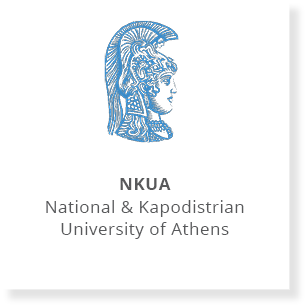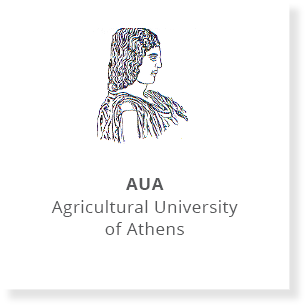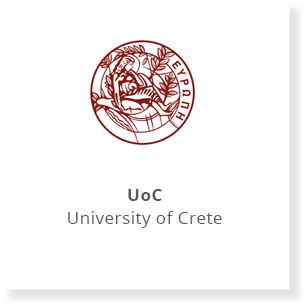




ΕρΓΑ Lab
The webpage bioerga.di.uoa.gr provides, inter alia, a number of web tools and interfaces in the area of applications of informatics in biology.
Multiprobe LSH approximate nearest neighbors. A web interface for LSHKIT: A C++ Locality Sensitive Hashing Library for approximate nearest neighbor searching in high dimensions (Author: Wei Dong at Princeton University). The web app can be used for Protein sequence similarity search with data from the Protein Data Bank (PDB) and is part of Deliverable Π4.1 of the “INSPIRED-ΕΚΠΑ” research project.
High-dimensional approximate nearest neighbors. k-d Generalized Randomized Forests (kd-GeRaf): A new data-structure for approximate nearest neighbor searching in high dimensions that introduces new randomization techniques to specify a set of independently constructed trees where search is performed simultaneously, hence increasing accuracy. Backtracking is omitted, and distance calculations are optimized, thus accelerating queries. The method is released as a web application. Paper by Avrithis, Emiris, Samaras. The web app can be used for Protein sequence similarity search with data from the Protein Data Bank (PDB) and is part of Deliverable Π4.1 of the “INSPIRED-ΕΚΠΑ” research project.
Lakes is a software tool for the prediction of protein binding sites. It analyzes the solvent and its contacts with proteins and defines clusters of water molecules, which mark potentially exposed interaction and binding sites of the protein. Contact: Dr Thanassis Tartas. Figure: black is the protein, colored are the oxygen atoms of clusters, red being the largest cluster.
Molecular conformations in Structural bioinformatics. Enumeration of all possible conformations of (small) molecules/proteins under geometric constrains; C-Space (interactive example). Paper by Emiris, Fritzilas, Manocha. Sampling of rotamers, and clustering to deduce structural determinants.
Graph embedding in Euclidean spaces, rigidity theory, enumerative problems of embeddings, distance geometry to compute conformations from NMR data.
Structure of Transmembrane proteins. Geometric modelling of β-barrels and detection of the transmembrane region of a β-barrel transmembrane protein. Given a PDB file, the transmembrane region is detected by profiling the external residues of the β-barrel along its axis in terms of hydrophobicity and existence of aromatic and charged residues. Our geometric modeling of the barrel relies on combining nonlinear least square minimization and a genetic algorithm. TbB-Tool is the software tool. Paper.
Biomedical AI lab
The Biomedical AI lab develops methods in signal & image processing, machine & deep learning, high-performance computing to address problems in Biomedicine and Systems Biology. We focus on mathematical and computational modeling and develop algorithms and software tools. The lab is headed by Prof. Elias S. Manolakos. Software tools improved and made openly available during the INSPIRED project are:
- PyMCPSC
• Python-based utility for Multi-Criteria Protein Structure Comparison (MCPSC)
• Allows efficient comparison of protein structures using alternative methods and consensus scoring methods and exploits the parallelism of multi-core CPUs for high-performance computing
• The source code and documentation of pyMCPSC are available under the GPLv3.0 license through our GitLab repository.
- ViSCAR
• Set of methods and functions for the image analysis of cytometry "cell-movies“ (videos)
• Visually explores and correlates single-cell attributes
• Used to model and visualize spatiotemporal evolution at different levels of microbial community organization
• Empowers researchers to capture and characterize stochasticity and decipher dynamic behavior
• The source code and documentation of ViSCAR are available under the GPLv3.0 license through our GitLab repository.
Bioinformatics services include:
Protein crystallography data processing and management
Small molecule crystallography data processing and management
Structure solution for proteins and small molecules
In silico ligand and protein design and modelling
In silico drug screening
Visit the provider's website: http://inspired.aua.gr/instruct/

DESCRIPTION:
Server consists of 24 units of 8-core Intel Xeon 2.8GHz workstations with 32GB internal memory each.
FUNDER: INSPIRED-AUA GSRT
A great variety of tools are used by experienced staff according to the biophysical and structural method. For structural analysis CCP4 suite, Phenix suite, Pymol, Coot and ATSAS are provided. For Molecular dynamics Amber program is used. For the secondary structure prediction Phyre program, Jasco CD software, CDtool and CDpy are used.